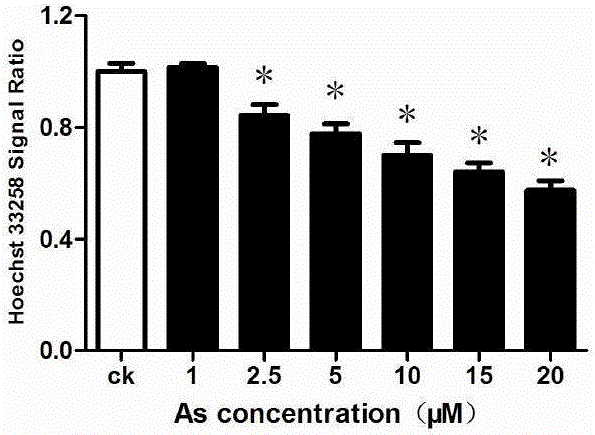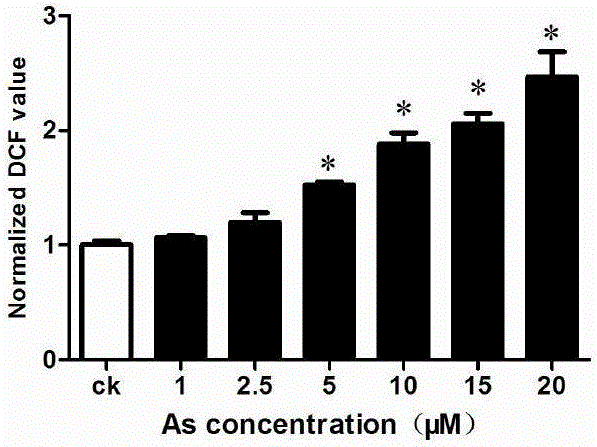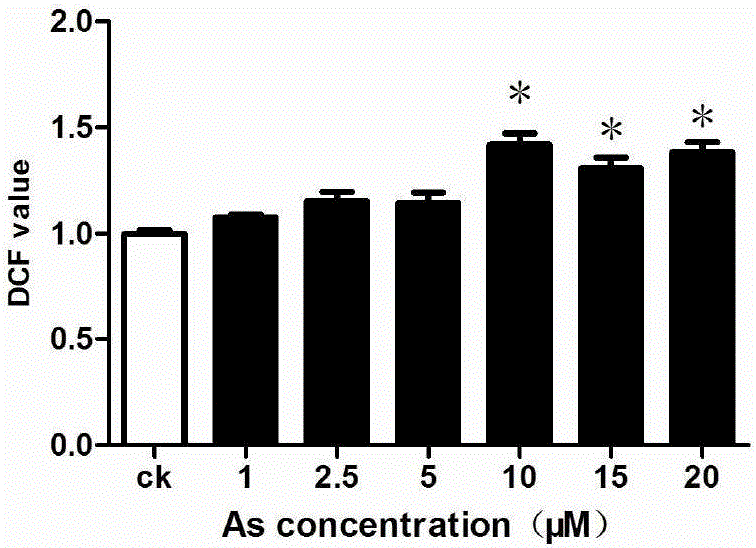Method of using Hoechst 33258 fluorescent dye to detect content of active oxygen in living cells
A technology of active oxygen content and fluorescent dyes, applied in fluorescence/phosphorescence, material analysis through optical means, measuring devices, etc., can solve problems such as inaccurate detection results, and achieve accurate, true and accurate reflection of detection results
- Summary
- Abstract
- Description
- Claims
- Application Information
AI Technical Summary
Problems solved by technology
Method used
Image
Examples
Embodiment 1
[0025] A method for detecting active oxygen content in living cells by using Hoechst 33258 fluorescent dye, comprising the steps of:
[0026] Step 1: Select the human liver cancer cell line HepG2 as the cell line for the test, observe its growth state under a microscope, remove the original medium, wash the cells with PBS buffer 1 or 2 times, and add 1 mL of trypsin-EDTA to the culture dish Solution, digest the cells; after the cell digestion is complete, add 10mL of fresh medium containing serum to stop the digestion, and blow the obtained cell suspension evenly;
[0027] Step 2, measure the cell density in the cell suspension with a hemocytometer, and seed the cells into a 96-well plate at a density of 10,000 cells per well;
[0028] Step 3: 24 hours after seeding the plate, the cells were exposed to poison, and different concentrations of exposed pollutant arsenic were added to different well plates;
[0029] Step 4: Use the DCFH-DA probe to detect the content of reactive ...
PUM
 Login to View More
Login to View More Abstract
Description
Claims
Application Information
 Login to View More
Login to View More - R&D
- Intellectual Property
- Life Sciences
- Materials
- Tech Scout
- Unparalleled Data Quality
- Higher Quality Content
- 60% Fewer Hallucinations
Browse by: Latest US Patents, China's latest patents, Technical Efficacy Thesaurus, Application Domain, Technology Topic, Popular Technical Reports.
© 2025 PatSnap. All rights reserved.Legal|Privacy policy|Modern Slavery Act Transparency Statement|Sitemap|About US| Contact US: help@patsnap.com



